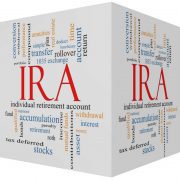Navigating the Tax Benefits of Self-Directed Roth IRAs
Self-Directed IRAs offer investors a unique opportunity to diversify their portfolio, gain control of their retirement investments, and potentially earn tax-free income. But not all Self-Directed IRAs are made alike. There is a plethora of retirement accounts which you can choose from. In particular, a Roth IRA is a type of Self-Directed IRA that offers many benefits to investors, including tax-free withdrawals in retirement. In this article, we’ll dive into the tax benefits of investing in a Self-Directed Roth IRA and how to navigate those tax rules.
The Self-Directed Roth IRA: Tax-Free Growth and Withdrawals
One of the most significant advantages of investing in a Self-Directed Roth IRA is that your investments grow tax-free. This means that you don’t pay taxes on any capital gains or income earned within the account, as long as you keep the funds within the account within the required amount of time. (In other words, until reaching the current retirement age of 59 ½). Additionally, withdrawals from a Roth IRA in retirement are also tax-free upon hitting retirement, as you’ll pay after-tax contributions to fund a Roth IRA. This can be a massive advantage for investors, especially those who expect to be in a higher tax bracket in retirement.
Income Limits and Contributions
While the tax benefits of investing in a Self-Directed Roth IRA are compelling, there are some restrictions on who can contribute to a Roth IRA. For 2022, the contribution limit was $6,000, or $7,000 if you’re age 50 or older. These are known as “catch-up” contributions. Over time, you can expect that the Roth IRA contribution limits may increase to correspond with inflation. For example, the Roth IRA contribution limits for 2023 are up to $6,500, depending on your specific situation.
Conversion Rules and Taxes
If you have a Traditional IRA or 401(k), you may be able to convert those accounts to a Self-Directed Roth IRA. The conversion process involves transferring funds from your Traditional IRA or 401(k) into a Roth IRA. However, there are some tax implications to consider when converting to a Roth IRA.
For example, the IRS requires that you hold the converted funds in the Roth IRA for at least five years before making any withdrawals. It’s essential to consider the tax implications of a conversion carefully and work with a financial advisor or tax professional to determine the best approach. As a Self-Directed IRA administration firm, American IRA’s role isn’t to serve as your tax accountant, but simply to administrate the Self-Directed IRA so you can issue buy and sell orders to us. There is a lot of freedom with using a Self-Directed Roth IRA, but you’ll notice that the responsibility of the tax implications also falls on you.
Investment Flexibility and Control
One of the main advantages of a Self-Directed IRA is the investment flexibility and control it offers. With a Self-Directed Roth IRA, you can invest in a variety of assets, including stocks, bonds, mutual funds, real estate, and more. This flexibility allows investors to create a diversified portfolio tailored to their individual goals and risk tolerance. Additionally, Self-Directed IRAs give investors more control over their investments, since they can make decisions about where to allocate their funds without relying on a financial advisor.
In all, investing in a Self-Directed Roth IRA can be an excellent way to grow your retirement savings and potentially earn tax-free income. However, it’s crucial to understand the tax rules and limitations associated with a Self-Directed Roth IRA.
Interested in learning more about Self-Directed IRAs? Contact American IRA, LLC at 866-7500-IRA (472) for a free consultation. Download our free guide or visit us online at www.AmericanIRA.com.









